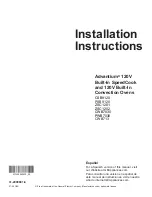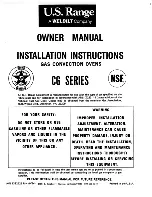
6 Installation
6.1 Electrical installation
6.1.1 Planning the Electrical Installation
Meaning
It is crucial for the unit's electrical system to be carefully and correctly installed in order for the unit to
run safely and without any problems. All the rules and specifications specified in this section, as well
as the procedures described, must be followed to the letter.
Rules for safely installing the units electrically
In order to prevent hazards related to improperly installed electrical connections, make sure to ob‐
serve the following rules:
■
The unit's case must be properly grounded as per generally accepted standards and practices and
connected to an equipotential bonding system.
■
If there are two units mounted in a single stacking kit, both the units' cases and the stacking kit
must be properly grounded as per generally accepted standards and practices and connected to an
equipotential bonding system.
■
The field installed conductors must be routed through a flexible conduit.
■
While placing the unit into operation, check all electrical cables and connections to make sure they
have been routed properly and installed correctly.
Electrical installation standards and regulations
In order to prevent hazards related to improperly installed electrical connections, make sure to ob‐
serve the following standards and regulations:
■
The connection to the power supply must be installed in accordance with the National Electrical
Code, ANSI/NFPA 70 (current edition); the Canadian Electrical Code, CSA C22.2; all other applica‐
ble national and state laws and regulations; and the local requirements set forth by the relevant lo‐
cal utility companies, trade associations, and authorities.
Equipment provided by the customer and electrical installation rules
The following table shows the equipment that must be provided by the customer and the rules that
have to be followed when making the relevant electrical connections.
Equipment
Rules
Fuse
The unit must be fused and connected in accordance with all applicable
local regulations and country-specific installation regulations.
Bonding
The unit must be connected to an equipotential bonding system. If there
are two units mounted in a single stacking kit, both the units' cases and
the stacking kit must be properly connected to an equipotential bonding
system.
Electrical Bonding: An electrical connection that brings the frames of elec‐
trical equipment and other conductive parts to the same or approximately
the same potential.
Disconnector
An easily accessible all-pole power disconnection with a contact gap of at
least 0.12" must be installed. The unit must be connected through this
power disconnector.
The power disconnection will then be used to de-energize the unit before
performing cleaning, repair, and installation work.
Installation must comply with all applicable local standards and regula‐
tions. In the case of permanent installations, a disconnector is required.
6 Installation
Installation Manual
40
















































